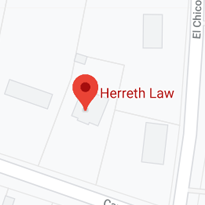 Alcohol and speed were the primary contributing factors in a fatal West Freeway wreck, according to police.
Alcohol and speed were the primary contributing factors in a fatal West Freeway wreck, according to police.
The wreck occurred in the 2000 block of West Interstate 30. 30-year-old Edward Longoria was apparently intoxicated and travelling at a high rate of speed when he lost control of his vehicle and smashed into a retaining wall. The passenger, whose name was not released, was declared dead at the scene. After first responders transported Longoria to a local hospital, he was charged with DWI-manslaughter.
Neither Longoira nor the deceased victim wear wearing seat belts at the time of the crash
Speed and Car Crashes
Since it increases both the risk of a crash and the force of a collision, speed is a factor in about a third of the fatal crashes in Tarrant County.
Excessive velocity decreases reaction time. At 30mph, most vehicles travel about six car lengths before a driver can safely stop the automobile. At 60mph, stopping distance triples to eighteen car lengths. If the driver tries to stop or slow down faster, the driver often loses control of the vehicle.
Speed also multiples the force in a collision between two objects. That’s why non-injury fender-benders are rather common on side streets and most freeway collisions are serious injury wrecks.
If the tortfeasor (negligent driver) received a speeding ticket, the tortfeasor may be liable for damages as a matter of law. Note that the posted limit is a presumably reasonable speed. So, in certain cases, even if the tortfeasor is not legally speeding, velocity may still be a factor in the crash.
The Seat Belt Defense in Texas
In 2015, the Texas Supreme Court overruled roughly four decades of precedent and ruled that seat belt non-use was admissible in civil court as to the measure of damages. But, the seat belt defense is not easy to establish in court. Lawyers must do more than read safety statistics to the jury.
First, the insurance company must establish that the victim was not wearing a seat belt. This evidence is difficult to obtain in many cases, such as a fireball wreck. Additionally, the insurance company must prove that the vehicle’s seat belt was in good working order at the time.
Next, a doctor or other expert must testify regarding the victim’s injuries. Expert witness qualification is not easy in Texas. If allowed to testify, this person must state unequivocally that a failure to use a seat belt proximately caused the victim’s injuries. Furthermore, the expert must testify that seat belt use would have reduced the victim’s injuries by X percent or eliminated them altogether.
A Fort Worth personal injury attorney has the opportunity to refute all this evidence. If the attorney creates enough doubt, the jury may not consider seat belt non-use when awarding damages to the victim. These damages usually include compensation for economic losses, such as medical bills, and noneconomic losses, such as pain and suffering.
High-speed vehicle collisions often cause serious injuries. For a free consultation with an experienced personal injury attorney in Fort Worth, contact Herreth Law. Home and hospital visits are available.

